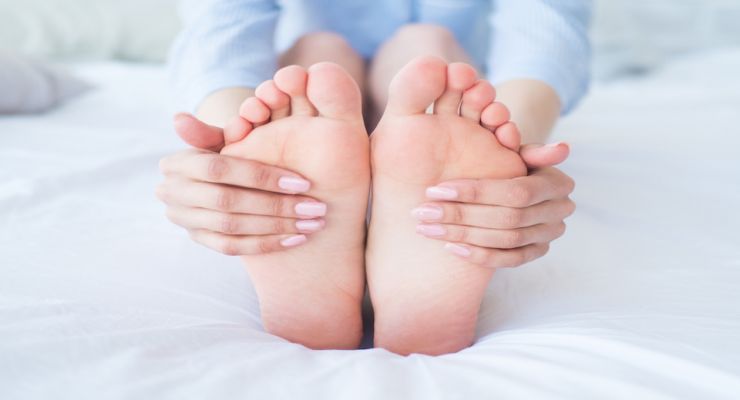Standing and walking are integral aspects of many jobs. From retail workers to restaurant employees and hospital staff, it is common to spend upwards of 8 hours per day on your feet. These days are usually passed on hard concrete floors that aren’t exactly comfortable. Extended periods of standing can cause severe joint and muscle issues throughout the body, especially if you don’t take the necessary precautions to prevent stress and fatigue on your feet. Here a few simple tips and tricks to avoid and alleviate that post-work foot pain.
Invest in proper footwear
Though this may seem like an obvious solution, many people don’t consider comfortable footwear to be an essential part of the work environment. Buy shoes that are supportive and fit you properly. Shoes that are too big or small can contribute greatly to foot pain. If you have a particular type of shoe that is part of your uniform, consider orthopedic inserts or try to find more appropriate alternatives.
Anti-fatigue mats
Many work environments, such as grocery stores provide anti-fatigue mats for cashiers that have to stand in the same place for extended periods. If you are standing still in front of a desk or register, consider approaching your manager about anti-fatigue mats. You could even purchase one yourself at a relatively low price and bring it with you when you come into work. These mats help alleviate some of the pressure that your feet experience and reduce joint pain.
Try to reduce the time spent standing in one position
Standing still for hours on end on a concrete floor is a recipe for achy feet. Keep moving and walking if possible and spend at least a few minutes every hour sitting down and give yourself a small break. If this isn’t possible, at least be sure to shift your body weight from one foot to the other to allow each leg to rest.
Consider compression socks
Much of the discomfort of standing on your feet all day comes from your body’s lack of ability to pump blood all the way down to your feet and back again. Compression socks are tight fitting socks that are usually about knee height and can help reduce swelling and pain by allowing proper blood flow. They can prevent blood from pooling around your feet and ankles and ease discomfort.
Rotate footwear
Wearing the same pair of shoes every day allows your feet to settle into unhealthy positions and patterns. Have a few pairs on hand that you can alternate between every couple of days. Also, you should be sure to purchase new shoes at least twice a year as soles can quickly become worn out with daily use.
Elevate your feet at home
There’s a reason that “putting your feet up” is a common expression. Once you return from a long day spent on your feet, give your body a little break and some downtime. Elevate your sore feet using pillows or a coffee table. This will help reduce pain and allow your body to circulate blood to all your extremities.
Soak your tired feet
No matter how many preventative actions you take, an eight or more hour day of standing on your feet inevitably takes its toll. When you get home, find a bucket or foot soaking tub and fill it with enough hot water to cover your feet and about a cup of Epsom salts. You can add a few drops of essential oils for scent if desired. Allow your feet to soak until the water cools and then rub them down with lotion and put on comfortable socks. Giving your feet this kind of love and attention helps to avoid various foot diseases, heel cracking, and restores circulation. Taking the time to care for your feet can really pay off in the long run.
Stretch
Stretching your feet, especially after a warm foot soak, is one of the best ways to relax, unwind, and prepare for another day standing on concrete. Try researching various stretches that can help loosen tight muscles and strengthen your feet. A tennis ball is a common tool that is often used in self-massage and foot exercises.
-Susan Patterson

